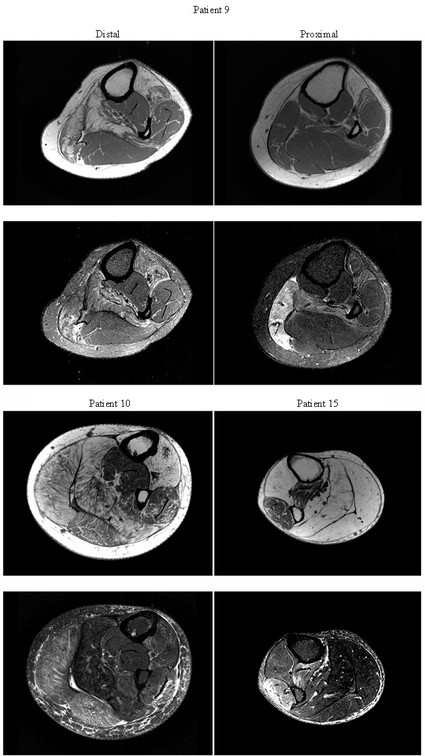Posted by Friends of FSH Research on Nov 28, 2011
Update: Additional paper published 29-May-2013: Longitudinal Features of Stir Bright Signal in FSHD
Update: Additional review paper published 16-Dec-2011: Skeletal Muscle Edema in Muscular Dystrophy: Clinical and Diagnostic Implications

Grant distributed November 18, 2011.
$36,000
Seth Friedman, Dennis Shaw, et. al.
Degeneration of muscles in FHSD is associated with fatty replacement on magnetic resonance imaging (e.g. Olsen 2006). Quantification of this fatty change has been posited as a potential biomarker of disease in anticipation of intervention trials (Kan 2009). Older pathologic literature and current work (Frisullo 2010) have shown evidence of inflammation pathologically, and elevated inflammatory markers in patients with muscles demonstrating edema on MRI. This work will build on our previous funded work describing the heterogeneity and distribution of edema and fat in calf within 15 FSHD patients (Muscle and Nerve article The MRI spectrum of Fascioscapulohumeral Muscular Dystrophy (FSHD)). This current proposal seeks to obtain longitudinal imaging data in calf and thigh, with the aim of determining the temporal pattern of edematous and fatty changes in the muscle observed in the earlier study. As we expect we will recruit an overlapping set of subjects from the original study, we will have longer-term data in the calf.

Imaging measures will be correlated to quality of life and functional indices. A third aim is proposed to look at peripheral blood inflammatory markers that have been reported in recent studies. Defining the muscle imaging patterns seen in FSHD will contribute to the understanding of the pathophysiology as to how the muscle is injured by the disease. This will then also be important in measuring the impact of interventions in future treatment trials.
— Dennis Shaw, Seth Friedman

See Grant: Longitudinal Progression of Edema and Fatty Replacement of Lower Extremity Muscles in FSHD





Connect with us on social media